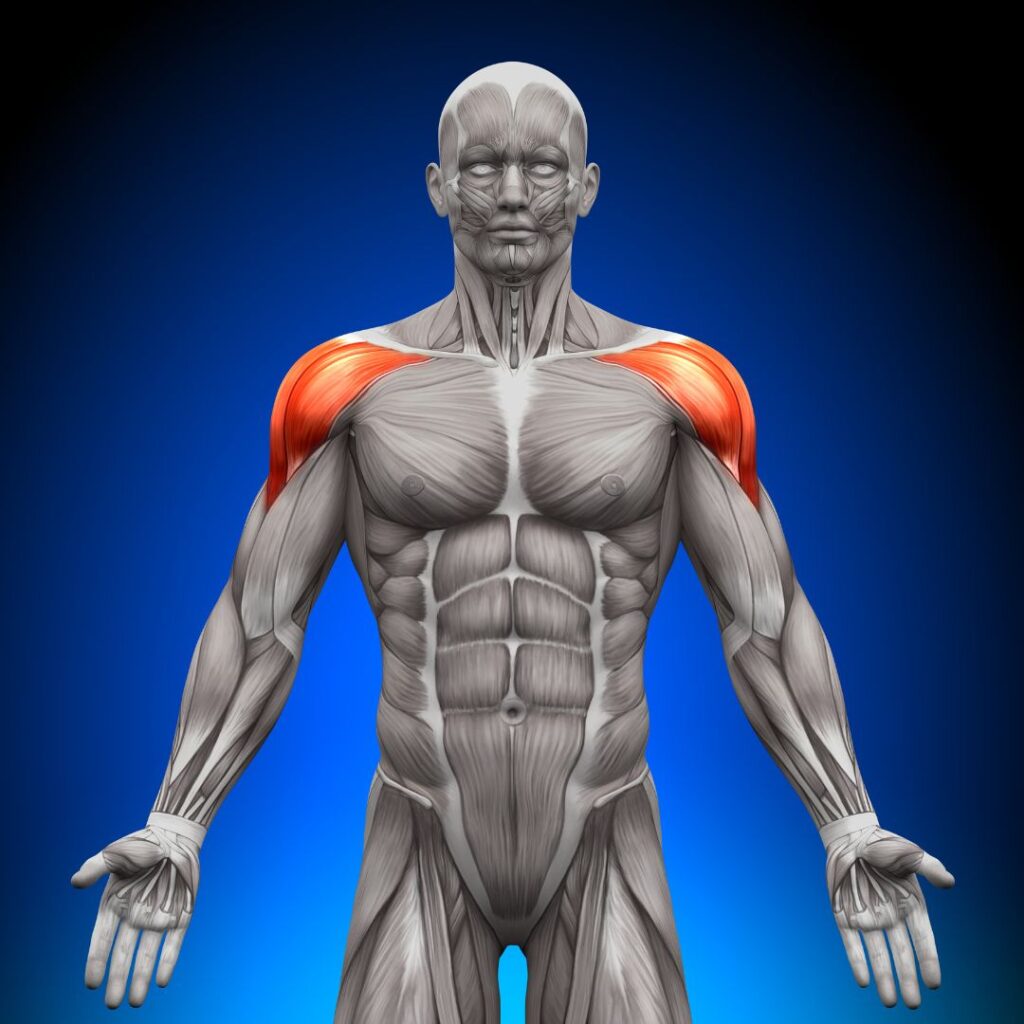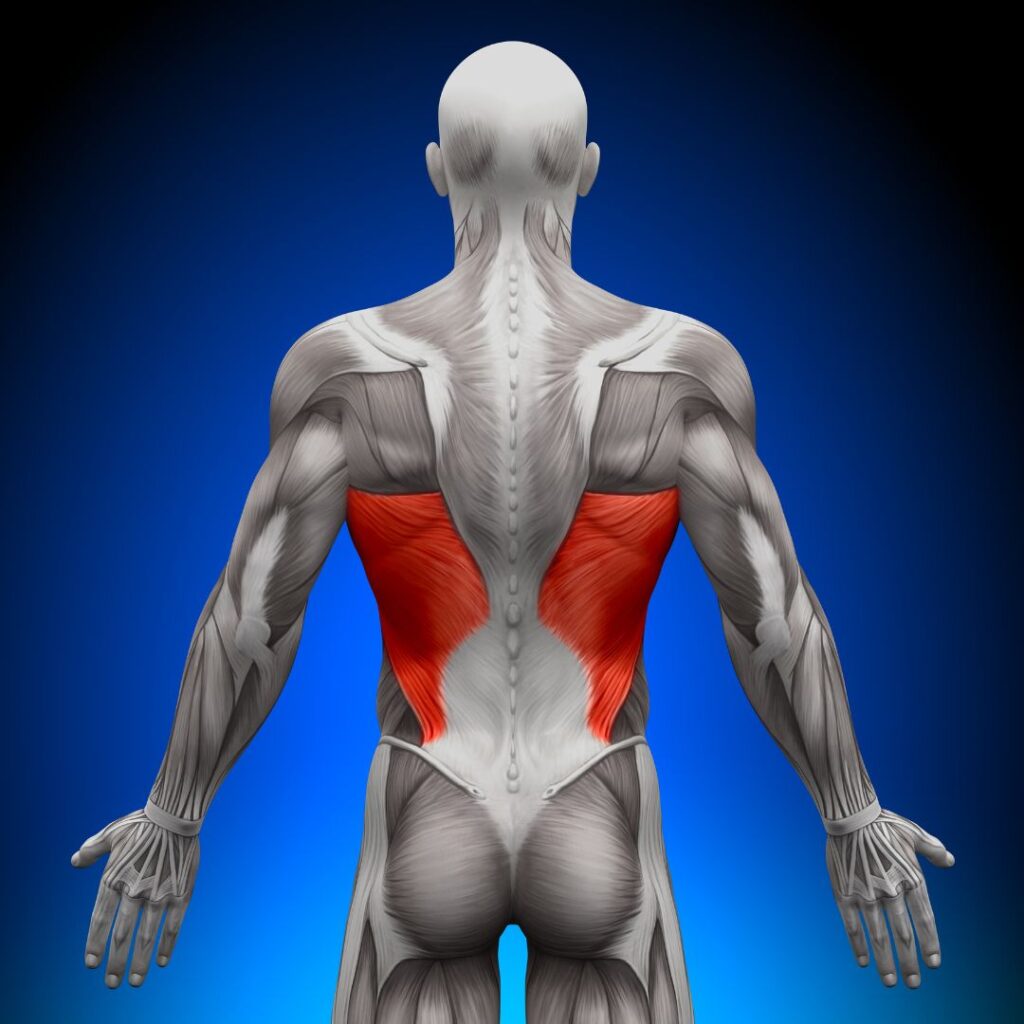Muscle Group of the Week: Deltoids

Located where the upper arm meets the torso, the deltoids are one of the most complex muscle groups in your body. Made up of three parts, your deltoids have an anterior, middle, and posterior section which all offer their own contributions to your body’s functioning.
While known as the main shoulder muscle, the deltoids do more than just execute functions of the upper arm and shoulder. But what exactly are the important actions for which the deltoids are responsible? And with all those repetitive movements they’re bound to endure, how can we keep those deltoids strong and healthy?
Main Functions of Deltoid
Connecting to other muscles and bones in your upper back, neck, chest, and shoulders, the deltoids play a crucial role in keeping the upper body balanced. Together with the rotator cuff, the deltoids work to stabilize the glenohumeral joint; more commonly known as the shoulder joint.
Other than keeping the torso and upper arm in alignment with one another, here are the actions that each section of the deltoid muscle is responsible for:
- Clavicular (Anterior) deltoid: arm flexion and internal rotation
- Acromial (Middle) deltoid: arm abduction
- Spinal (Posterior) deltoid: arm extension and external rotation
Your ability to reach, push, and pull are all attributed to the actions listed above.
Making it Strong
Each part of the deltoid needs to be strengthened so the whole muscle group can function best! Here are the best exercises for each section of the deltoid muscle! It’s helpful to watch the video below to get a good visual of the proper form. Skip to the 2:30 time stamp if you want to get straight to the exercises!
Anterior deltoid
-
- For the front delt attached at the lateral 1/3rd of the clavicle, shoulder pressing exercises such as the bench press or overhead press are highly effective
Middle deltoid
-
- Barbell upright rows and lateral arm raises will target will target the deltoid attached at the acromion
Posterior deltoid
-
- Attached at the spine of the scapula, the back deltoid can be strengthened on a rear delt fly (a machine also known as reverse pec)
Keeping it Happy
Because the shoulder joint is a ball and socket, it is highly mobile. In fact, it’s the most freely moveable joint in your body! Due to its impressive mobility, the shoulder is vulnerable to repetitive motions which eventually wear out the surrounding muscles and put them at risk for injury. So to keep the onset of more serious injury away, what can we do when our main shoulder muscles tighten up?
The deltoid, being a superficial shoulder muscle, lies deep only to its fascial encasing. With this being the case, myofascial release therapy followed by deep tissue massage can be very effective when directly applied to the deltoid muscle group.
Once that tight deltoid has its knots removed and its short fibers lengthened, we’ll have to move onto treating the surrounding muscles that have been weakened. A hyper contracted deltoid muscle is going to pull on the pectoralis muscles as well as the latissimus dorsi, which can be shortened and strengthened through assisted stretching.
The videos below show examples of assisted stretches targeting the latissimus dorsi and pectoralis muscles.
The Best Stretch for the Deltoids
What are some of the best stretches you can do to keep those deltoids strong and mobile? How are they done?
Crossbody Rear Deltoid Stretch
- Stand straight with feet hip-distance apart
- Engage your core muscles
- Bring your right arm up to your neck, bending your elbow at a 90 degree angle
- Reach left hand across and grab just above your right elbow
- Pull right arm across your body until you feel a posterior delt stretch
- Hold the stretch for 30 seconds and repeat on opposite side
Standing Chest and Shoulder Stretch
- Stand straight with your feet hip-distance apart
- Engage your core muscles
- Reach straight behind your back with both arms, clasping hands together
- Inhale
- While exhaling, lift your hands as far as you can behind you until you feel stretch across your chest and shoulders
- Hold position, breath deeply for 30 seconds
- Release and repeat three more times
Stick Pass Around Stretch
- Find a stick
- Hold the stick with hands wider apart than shoulder width and arms at shoulder height straight out in front
- Pull the stick across to the left until it is vertical and parallel to your ear
- Still guiding the stick to the left, bring the stick above your head horizontally and finish the motion in starting position (the position described in step 2)
- Repeat exercise on the right side
- Alternate reps, 8-12 times per side
H2 – Now You Know!
Take good care of your shoulders!
Be sure to check out the muscle group of the week next time around, when we’re talking about those scalenes in your neck!

Katrina Jenkins
Author, Licensed Massage Therapist
Katrina Jenkins graduated from Towson University in 2013 with a Bachelor’s Degree in Health Science and worked as a nurse’s aide briefly before pursuing her true passion. She graduated from the Massage Therapy Institute of Colorado in April 2016 with honors and completed the Touch of Healers Scholarship Program the following summer. She has been a part of the Moyer Total Wellness Team since the summer of 2017.
Resources
Bustos, img class=”avatar” alt=”Laura Williams, et al. “4 Deltoid Stretches for Shoulder Pain and Tightness.” The Healthy, 19 May 2021, www.thehealthy.com/exercise/deltoid-stretch/.
Ferri, Brittany. “The Anatomy of the Deltoid Muscle.” Verywell Health, 28 Jan. 2020, www.verywellhealth.com/deltoid-muscle-anatomy-4688693.
Hersh, Erica. “Deltoid Pain: Treatment, Recovery, Symptoms, and More.” Healthline, 15 Nov. 2017, www.healthline.com/health/deltoid-pain.
Walker, Wendy. “Deltoid.” Physiopedia, www.physio-pedia.com/Deltoid.
Photo Credit
Canva by Tima Miroshnichenko from Pexels
Canva by yacobchuk
Canva by interstid
Canva by janulla
Canva by decade3d
Canva by decade3d
Canva by Prostock-Studio






